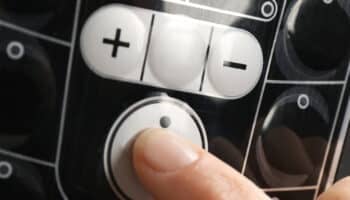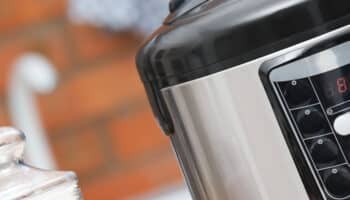We've independently reviewed this article to make sure it's as accurate as we can make it.
To find out more about our article creation and review process, check out our editorial guidelines.
Slow cookers are great, but have you ever thought about the cost of running them?
If you have, then you probably already have some idea as to what the power consumption on these appliances looks like.
However, with so many different models out there, it can be tricky to pinpoint exactly how much you’re paying for your unit every month. To do this accurately, you have to take into account daily hours of use, size, energy-efficiency rating, component health, and much more.
Luckily, I’ve created the calculator below, which takes into account the most important aspects when it comes to determining your slow cooker’s power draw. In this article, you’ll also find useful tips to make your appliance more efficient, so you can save some money.
Read on to keep utilities down!
The Calculator
How I’ve Estimated Slow Cooker Running Costs
To create this calculator, I used BestBuy’s database for 50 different slow cooker types. Although they’re fairly simple appliances, a lot of people are not aware that different models have different wattage ratings.
The good news is that this typically comes hand in hand with size, so by estimating that, we can get a more accurate approximation of power draw.
To account for all possible scenarios, I considered 50% power draw for low heat settings, and 25% for the warm feature. These estimates are a little high, and the appliance will probably draw less power than that, as the heating element will turn on and off to maintain the preset temperature.
You should also take into account the cost of electricity in your state, as this can help provide an even more precise estimation.
Before moving forward, I should also mention that there’s no reason to worry too much about your slow cooker’s power draw, as, in most cases, it’s actually quite low, and not as significant to your month’s bill as other elements.
In fact, appliances like Air Conditioners, portable heaters, and dehumidifiers are typically more power-hungry than slow cookers.
How to Lower Your Slow Cooker’s Running Costs
#1 Use the Right Size Appliance
One of the easiest ways to use more power than you need while preparing meals with your slow cooker is by using buying the wrong-sized pot. After all, energy efficiency is all about using just the right amount of resources to accomplish a desired result.
If you buy a slow cooker that is too big for your daily meal-prep requirements, you’ll end up paying extra for benefits you’re not even getting. The larger the slow cooker, the more power it will draw, so make sure that you buy consciously.
There are many online resources that can help you determine what size slow cooker you require based on your habits, the size of your family, and much more.
#2 Keep the Lid On
Yes, I’m serious.
You’re probably wondering why I’m suggesting something so obvious, but you wouldn’t believe how often I see people forgetting about something this simple.
Not unlike other appliances like refrigerators and freezers, slow cookers depend greatly on temperature preservation and airtight seals to ensure it. It might seem harmless, but constantly lifting the lid of your appliance to check on the ingredients lets hot air escape the pot, increasing cooking times significantly and overtaxing the unit.
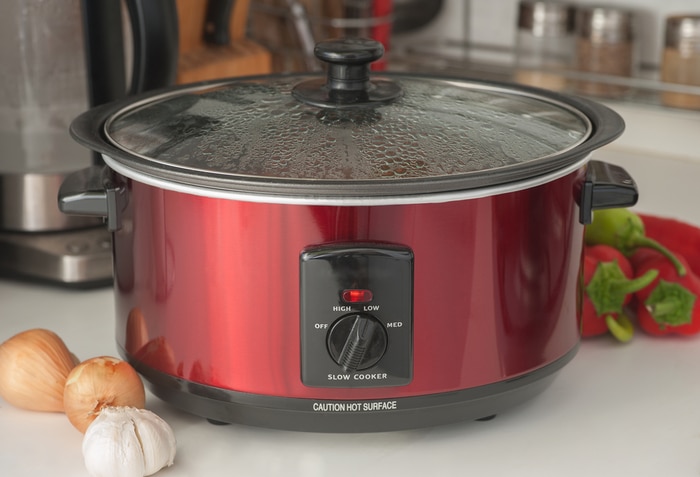
Naturally, longer cooking times mean more power is required to prepare a specific dish. And while this won’t burn a hole in your pocket by the end of the month, isn’t it better to be patient and spend less time in the kitchen while saving a couple of dollars?
#3 Keep It Clean
Keeping your slow cooker clean and disinfected at all times is essential, not only from a hygiene standpoint but also from an efficiency perspective.
You see, as you prepare delicious meals with this appliance, food residue can build up inside the pot and affect the unit’s cooking power. This can be made worse if there are any cracks in the container, as liquid might seep through and create a short circuit.
By constantly checking the integrity of your slow cooker and making sure to remove any and all food residue from inside the appliance’s container after each meal, you’ll be helping it cook food more easily and a lot quicker!
#4 Do Not Overfill It
Cooking as much food in as few batches as possible always sounds appealing. It’s one of the easiest ways to save a lot of time and have things ready for family dinners or a get-together with friends.
But how much is too much? Is there such a thing as overfilling your appliance’s pot? Absolutely. In fact, it’s a lot easier than you think.
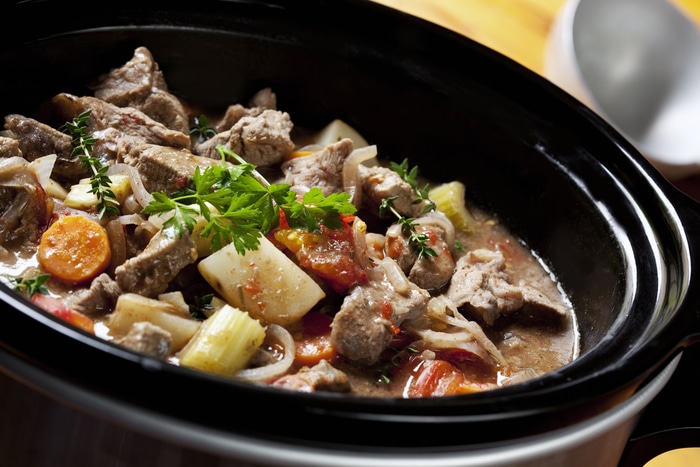
Most (if not all) slow cookers typically have a mark that says “Max” inside the pot. This line indicates that you should not put more food inside the unit once that level has been reached. Overfilling your pot can result in many issues, such as spillage, overheating, and of course, excessive power draw.
Appliances are designed by their manufacturers to serve specific purposes and be used while following their recommendations to a tee. Ignoring said recommendations can be problematic, and leave you with a messy slow cooker that is costing you more than it should to run it.
This is why it’s really important that you make the right choice from the start and buy an appliance that will meet your needs and those of your family.
#5 Get an Automatic Shut Off Timer
The last suggestion I’d like to make is that you get one of these devices.
In a nutshell, automatic shut-off timers are small devices that you connect to your kitchen’s wall outlets on one side, and to your appliances on the other. They work by following a timer set by you, which cuts off all electricity flowing from it to your appliances when it goes off.
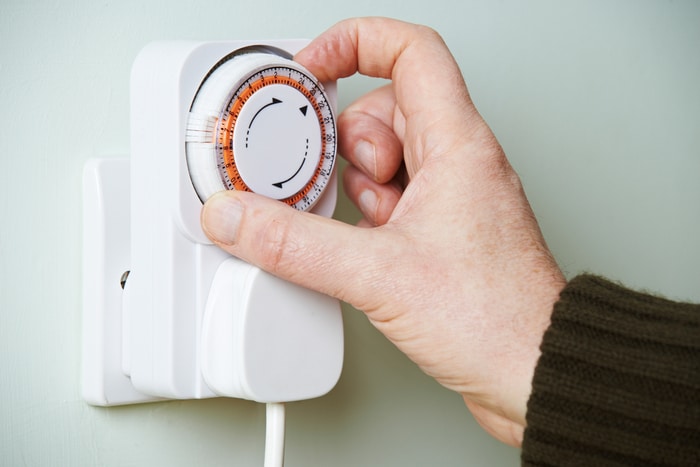
You might be wondering why you require an extra device to control this if your slow cooker probably has an automatic shut-off feature, right? Think again.
While some units may have an automatic deactivation feature, in many cases it doesn’t kick in after several hours. In the meantime, the appliance will keep cooking (and likely burn) your food and drawing power until you manually turn it off.
Now, this is only an issue if you’re away all day at work and there’s no one home to keep an eye on the appliance. If you work from home or have some family member that can take care of switching the unit off at the right time, great!
Conclusion
That about covers it!
Slow cookers are great kitchen allies and yield amazing results that melt in your mouth. But when they’re drawing more power than you’d like them to, convenience can turn into inconvenience very quickly.
Hopefully, this piece has helped you better understand whether your slow cooker is actually to blame for higher utility bills at the end of each month and what you can do in case it is. In many cases, something as simple as picking the right-sized appliance from the get-go, and keeping an eye on the filling levels, should do the trick.
Thank you so much for sticking with me all the way to the end. If this article piqued your interest and answered all your questions, please make sure to check out our other resources below and consider subscribing to our newsletter.
On the site, you’ll always find all sorts of guides, tips, and solutions related to appliance issues, such as a slow cooker that won’t turn on.
I wish you nothing but the best!
— Craig.






